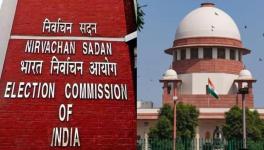Does the Collegium System Ensure Independence of Indian Judiciary?
With the growth of populism and autocratic tendencies in democracies, the role of judiciaries has become more important than ever.
It is particularly to check state action and protect citizen rights. In the last few years, the growth of judicial power in democracies across jurisdictions has become a topic of study for constitutional law scholars. The more contemporary analysis of judicial power focuses on how judiciaries and the power they exercise affect political transformations.
The Supreme Court of India has seen one of its most tumultuous phases yet, under the current Modi government. The undeniable growth of right-wing perpetuated violence and systemic discrimination against the Dalit and Muslim communities has raised questions on the Supreme Court’s duty in a democracy.
Firstly, the judiciary derives democratic legitimacy from the public by showing its commitment to democratic values and protecting citizens from arbitrary state action. Secondly, the Court’s power and position vis-à-vis the other democratic organs in light of judicial appointments in India.
Re-claiming judiciary’s power to protect citizen rights
Several constitutional law scholars have written about the power struggles between the judiciary and the executive in India in times of political instability, often in the context of judicial independence.
Rehan Abeyratne, for instance, uses the judgments and reactions of the constitutional courts in issues relating to citizen rights to study, comparatively, judicial independence in India and Sri Lanka. He uses case laws on arbitrary government action to examine how the Supreme Court’s of both countries react to protect the rights of citizens.
However, to some extent, High Courts across India have certainly been more effective in protecting citizens’ democratic rights, such as the right to dissent peacefully, as compared to the Supreme Court in this time of political turmoil.
Similarly, literature on the activity of the Indian Supreme Court under the Modi government is also growing.
As a result of the protests against the CAA, there were several incidents of targeted violence against the Muslim community and protestors. In the face of right-wing perpetuated violence, neither the police nor the Supreme Court came to the rescue of the targeted communities.
However, to some extent, High Courts across India have certainly been more effective in protecting citizens’ democratic rights, such as the right to dissent peacefully, as compared to the Supreme Court in this time of political turmoil.
Perhaps courts which are lower in the judicial hierarchy have an easier time asserting their power over state executives rather than the Supreme Court over the Union? It may also be easier for courts to condemn localised, individual actions of the governments than, perhaps, the Supreme Court asserting its power over the Union government and criticizing national-level draconian laws, like the UAPA.
It is true that the Supreme Court of India has had ‘activist’ phases, as constitutional law scholars like to call them.
The court has decided in favour of citizen rights, by abolishing bonded labour, upholding the right to privacy, decriminalising homosexuality, among others. However, the court has also performed a small and ineffective role in protecting rights during the COVID-19 driven lockdown in India; particularly with regards to mass migration and loss of lives of migrant workers.
It is debatable whether keeping political actors outside the appointment systems has successfully preserved the ideal of judicial independence in India, and whether, in doing so, the judiciary has reclaimed its power over the same.
The lack of prerogative on the part of the Supreme Court sends the message that it is subordinate to the government, even when it comes to protecting the basic human rights of the citizens.
Asserting Judicial Power through appointment systems
India’s High Court and Supreme Court judges are appointed by a Collegium system, which does not exist under any enacted law but was the court through its judgments.
In 1998, a series of decisions in the Three Judges case finally established that the judges of the High Court and Supreme Court of India will be selected by a group of judges, headed by the Chief Justice to India. While the Chief Justice of India was to consult the Executive i.e the President or the Governor of State, the Chief Justice need not “concur” with their opinion. Thus, it was (and is) amply clear that the Chief Justice of India, as the head of the judiciary, had the final word when it came to judicial appointments to the higher judiciary.
The Collegium system was re-affirmed in 2015 when the Supreme Court of India struck down a new law which sought to change the system of judicial appointments in India (The National Judicial Appointments Commission Act, or ‘NJAC’). The Court said that the Act violated the principle of judicial independence since political members of the proposed commission held voting power.
It is debatable whether keeping political actors outside the appointment systems has successfully preserved the ideal of judicial independence in India, and whether, in doing so, the judiciary has reclaimed its power over the same.
Debates and attempts to pass a law on Judicial Accountability in India have failed, for the sake of a perceived idea of ‘judicial independence’.
As can be the tendency across constitutional law scholarship and other jurisdictions, India treats judicial independence as a monolith.
In India, judicial independence has largely been understood in the context of preserving the Collegium system of appointments.
As regards independence in decision making, incidents point to the fact that the judiciary often lacks the power to give unbiased decisions against the government. Therefore, keeping executive power outside the purview of judicial appointments does not guarantee the independence of the judiciary from the executive government in decision making. Further, studies clearly show that judges who decide cases in favour of the government are more likely to get post-retirement appointments in India.
Reforming the Collegium system
The judgement of the Supreme Court in the Three Judges’ cases was a clear attempt to regain control and power over judicial appointments after the Emergency when it was entirely with the Gandhi government. However, it would be difficult to say whether the Court reclaimed its power yet again, with the re-affirmation of the Collegium system.
The judgment was severely criticised for furthering opacity and nepotism in the already broken judicial appointments system. Further, the existing collegium system under the Modi government has faced criticism for its inability to withstand interference from the Executive, thus leading to questions about the judiciary’s (in particular the Supreme Court’s) independence.
Debates and attempts to pass a law on Judicial Accountability in India have failed, for the sake of a perceived idea of ‘judicial independence’.
Ironically, India remains one of the very few countries in the world where judges are appointed only by judges. In other jurisdictions, for better or worse, there are commissions for the appointment of judges. In effect, judicial supremacy was re-affirmed in the Indian context post the NJAC judgment in 2015.
While, on the face of it, it seems that the judiciary has reclaimed its judicial power, the judiciary’s silence in the face of arbitrary state action proves that the story is much more complex.
The article was originally published in The Leaflet.
(Medha Srivastava is a Ph.D. Scholar and Researcher at the Humboldt University of Berlin. Views are personal.)
Get the latest reports & analysis with people's perspective on Protests, movements & deep analytical videos, discussions of the current affairs in your Telegram app. Subscribe to NewsClick's Telegram channel & get Real-Time updates on stories, as they get published on our website.
























